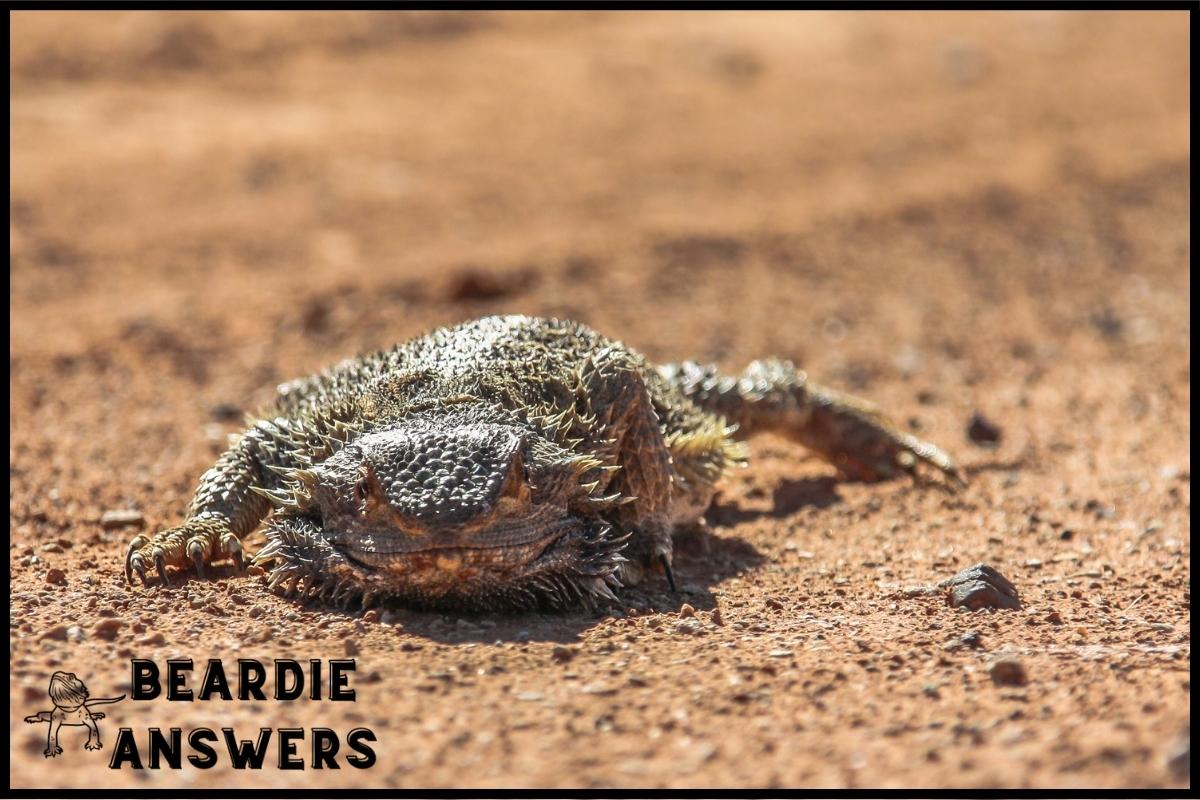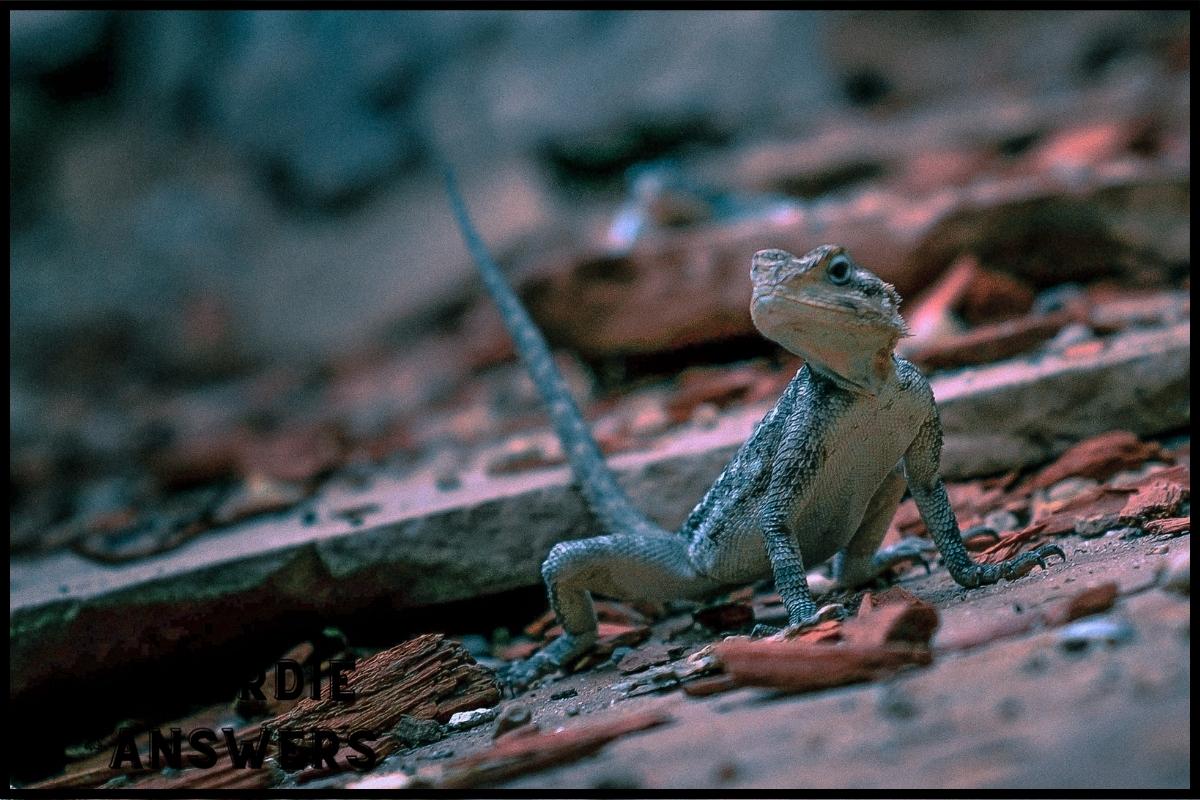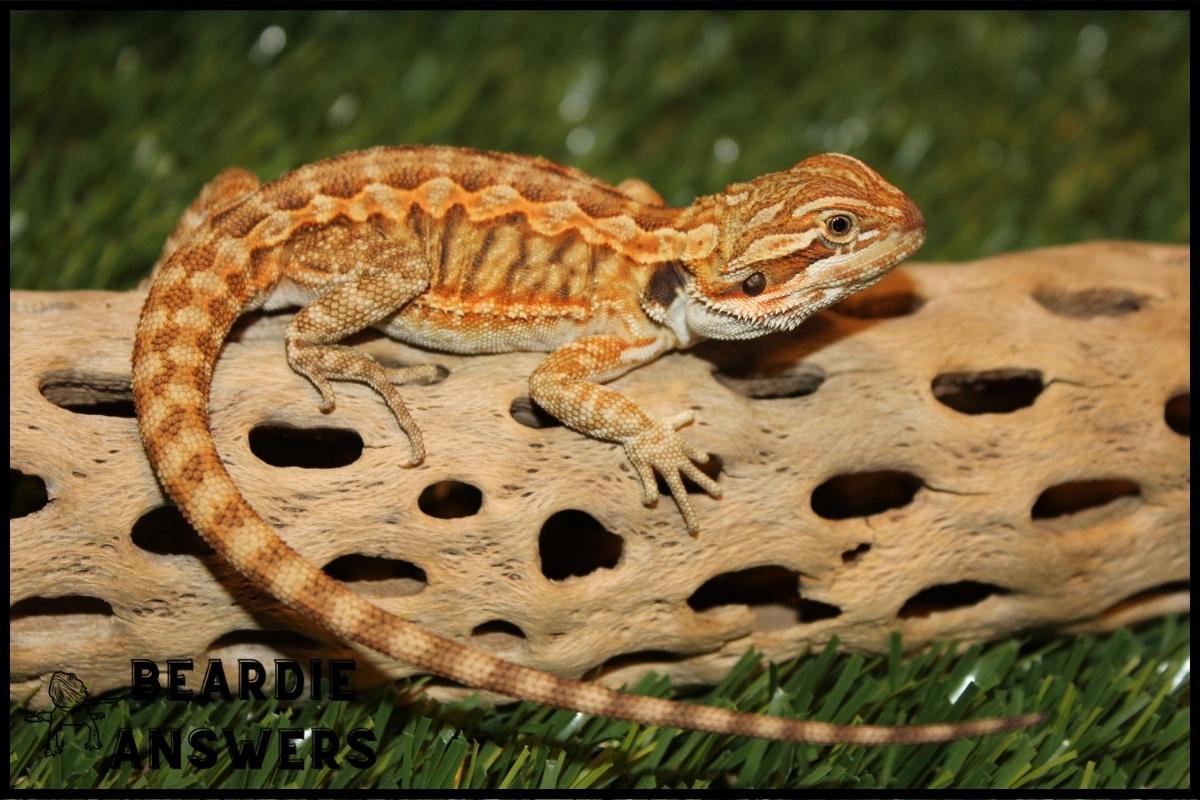Bearded dragons are generally docile and unlikely to bite unless they feel threatened or scared. However, it’s important to handle them gently and avoid sudden movements to prevent any potential bites. With proper handling and care, bearded dragons can become affectionate pets.
What You'll Learn
Identifying Signs Of Stress In Your Pet
Bearded dragons are generally docile creatures, however it is important to understand their behavior and be able to recognize signs of stress. When a bearded dragon feels threatened or scared they may show aggression through biting. To limit this possibility you should provide them with plenty of positive reinforcement and calming scents. This can help them feel more secure in their environment and reduce the chances of your pet displaying aggressive behaviors such as biting.
In addition to providing positive reinforcement, owners must also create an environment that will keep the beardie happy and healthy. This includes making sure they have enough space to roam, access to fresh water at all times, and a variety of plants for food sources. Ensuring that your pet has regular exposure to natural sunlight during the day is also critical for their health. By creating an enjoyable living space you can ensure that your bearded dragon remains relaxed and safe from potential threats.
Providing a safe and stimulating environment for your bearded dragon does not need to be complicated. With a few simple steps you can make sure that your furry friend enjoys its home while remaining calm and stress-free.
The next section will focus on how to provide suitable enrichment activities so that your bearded dragon stays contented in its new home.
Providing A Safe And Stimulating Environment
Let’s talk about how to provide a safe and stimulating environment for our bearded dragon by discussing topics like handling, diet, enclosure, temperature, lighting, humidity, decorations, hiding spaces, exercise, socialization, playtime, handling safety, schedules, stress reduction, and handling frequency.
We’ll need to consider all these topics to ensure our bearded dragon is comfortable and healthy.
Handling
When it comes to providing a safe and stimulating environment for your pet bearded dragon, handling is an important aspect of its care.
To ensure their safety, always wash your hands before and after handling them, as well as be sure that the enclosure setup is secure with no potential hazards or escape routes.
Be gentle when picking up your pet so they don’t feel threatened or scared.
You may also want to provide them with a designated hiding spot in case they need some time away from you.
With proper care and attention given to both their physical and mental wellbeing, you can create a loving home for your beloved bearded dragon!
Diet
Now that you know how to properly handle and care for your pet bearded dragon, it’s time to talk about their diet.
Feeding techniques are important when it comes to providing a balanced and nutritious diet for your reptile pal.
An optimal diet should include insects such as crickets, mealworms, cockroaches and silkworms supplemented with fresh vegetables like collard greens, bok choy, mustard greens and other leafy greens.
Be sure to offer vitamins or calcium supplements as well as provide a source of natural light so they can absorb vitamin D3 from the sun.
With these feeding techniques in place, you’ll be able to give them the best possible nutrition!
Handling Your Dragon With Care
Bearded dragons are gentle, and can even be friendly. Much like a pet dog or cat, they deserve our care and attention in order to keep them healthy and happy.
In order to do this, it is important that we understand the basics of how to handle them properly – from bathing safety to cage hygiene. Symbolically speaking, caring for your dragon is much like tending to a garden; you must nurture its environment if you want it to thrive.
Bathing safety should include warm water levels no higher than their chest area, as well as providing ample time for drying off before returning them back into their enclosure. Cage hygiene includes cleaning up any debris daily (such as old food leftovers), as well as regularly washing dishes with hot soapy water and refilling fresh drinking water at least every other day.
Keeping your bearded dragon safe requires more than just physical measures; understanding your pet’s behavior will help create an amiable relationship between both owner and pet. Knowing which signs indicate stress or fright can help prevent situations where they’d feel threatened enough to bite, while also allowing us to proactively intervene when needed.
Knowing How To React In Case Of A Bite
It is important to understand that bearded dragons can bite, even though it’s rare. Knowing how to react in case of a bite is essential for the safety and well-being of both you and your dragon. Here are some strategies you should consider as part of socializing your pet:
- Establish trust with your dragon by handling them gently and regularly.
- Show patience when introducing new objects or environments.
- Allow time for your pet to explore its surroundings on their own terms.
When interacting directly with your beardie, make sure they feel secure and at ease around you.
- Speak calmly and quietly while approaching them from their side rather than head-on.
- Move slowly so as not to startle them or cause any sudden movements that could trigger an instinctive reaction from fear or aggression.
- Avoid making loud noises near them or poking/prodding too much during playtime activities.
If a bite does occur, remember to remain calm and take appropriate action quickly depending on the severity of the injury caused by the bite.
- This may include basic first aid measures such as cleaning the wound with antiseptic wipes, applying pressure if there is bleeding, taking pain relief medication (if necessary), and seeking medical attention if needed.
Taking preventative steps now will help ensure the safety of both yourself and your dragon in the future!
Taking Preventative Measures To Avoid Bites
When it comes to avoiding bites from a bearded dragon, proper handling and safe housing are important considerations.
Handling should be done slowly and gently as they can become easily startled or scared if handled too roughly.
It is also best not to grab them by the tail as this could make them feel threatened and cause them to bite.
When housed in captivity, it is important that their enclosure provides enough space for them to move around comfortably and explore.
This will help keep them calm and reduce stress levels which may lead to biting behavior.
Additionally, make sure any other pets such as cats or dogs do not have access to the bearded dragons’ enclosure as this could scare the dragon and result in a bite.
Providing a secure environment with plenty of hiding places like rocks or logs will create an atmosphere where your beardie feels comfortable and safe, reducing the risk of being bitten.
Taking these steps can help ensure you have a happy, healthy pet without risking getting bitten.
Conclusion
To conclude, it is important to remember that bearded dragons can bite if they feel threatened or scared. It’s essential to provide them with a safe and stimulating environment as well as handle them with care in order to avoid any potential bites.
By doing our best to understand their behavior and reactions we can create the perfect atmosphere for our pet dragon. But, why take chances when you don’t have to? Taking preventative measures such as avoiding sudden movements around your pet can help ensure its safety and yours.
So ask yourself: do I want my beloved pet to be happy and secure? The answer should always be yes!

Hi! My name is Bryan, I am the “one behind the words” here are BeardieAnswers.com. I believe that providing quality care and nutrition is the best way to ensure the health of your pet. Every beardie is special and deserves the best care and attention. If you have questions about your bearded dragon, please don’t hesitate to ask! View My Full Author Page




